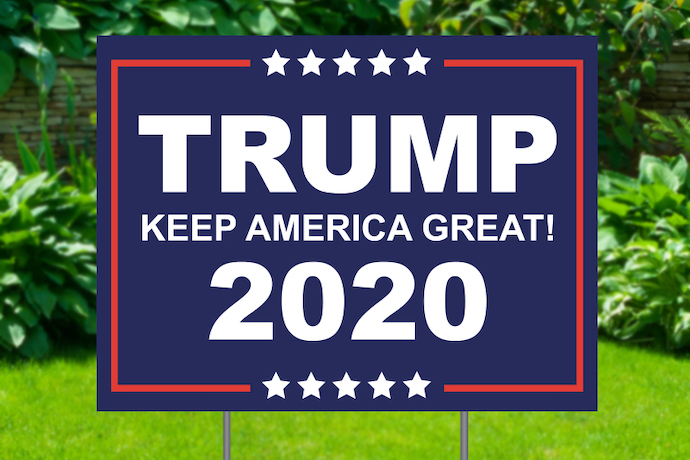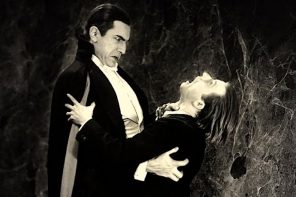Last week at White House Conference on American History, President Trump responded to what he called the “left-wing indoctrination” rampant within the public school curriculum. He took aim at the New York Times’ 1619 Project that sought to re-examine America’s racist history, beginning with slavery, calling it “ideological poison” and claiming that its goal was to “dissolve the civic bonds of America” by interpreting our history through a racial lens, worsening already intractable racial divisions.
As an alternative Trump declared that day he would sign “an executive order establishing a national commission to promote patriotic education” called the “1776 Commission.” This initiative would help develop a “pro-American curriculum that celebrates the truth about our nation’s great history.”
“Our nation’s great history.”
That statement might sound ironic coming from a President and supporters who have passionately resisted calls to remove Confederate statues and monuments (see below)―evidence that our nation’s history is, in fact, not so great. But that’s actually the point.

Source: Public Discourse and Ethics Survey (August 2020)
Trump and his supporters don’t evaluate our nation’s greatness in light of our moral virtue. And they don’t value “history” or “the past” for its own sake. Rather, America is “great” when they are in power. And just like the eras those Confederate monuments aimto celebrate, Trump and his followers think our nation’s been doing pretty great these past four years.
Consider these findings from a nationally representative survey of American adults we collected in August. We asked our fellow Americans, “Based on the direction the United States is heading, do you think the nation’s best days are behind us? Right now? Or sometime in the future?”
Given the appeal of “MAGA” in 2016 and the apocalyptic visions constantly depicted by Trump’s Christian nationalist spokespersons, we honestly expected Trump’s supporters to venerate the nation’s past while dreading America’s future as a dystopic hellscape.
We were wrong.
Look at the figure below. The most noticeable pattern is that most Americans―whomever they intend to vote for―remain optimistic about the nation’s future. Moreover, comparatively few Americans who support either candidate believe America is experiencing its best days right now.
Nevertheless, look at the comparisons. Trump’s supporters are no more likely than Biden’s to think America’s best days are behind us. They are only slightly less likely to feel America’s best days are still to come.
The biggest difference in terms of proportions are that over twice as many Americans who plan on voting Trump think America is experiencing its best days right now.

Source: Public Discourse and Ethics Survey (August 2020)
It turns out that Trump’s voting base, often described as “nostalgia voters,” aren’t all that nostalgic, at least no more so than Biden’s supporters. Why is that a big deal?
Under a Democratic President like Obama, the idea of “nostalgia” for American greatness might have appealed to Trump supporters on a rhetorical level, but the percentages above suggest that with Trump in power, his supporters really don’t pine for some abstract, mythical golden era at all.
Remember: they don’t venerate the past; they value power.
In fact, Trump’s supporters are even more positive about the current situation under his administration than the figure above suggests. When we asked Americans to choose a specific year that America was at its best, it turns out they are far more likely to pick the current era under Trump as America’s best time in history.
You can see in the figure below that there is substantial overlap between Biden and Trump supporters up until the present day. For example, both Biden and Trump supporters are similar in the percentage that chose 1776 or 1945.
However, notice where Trump’s supporters land when asked about America’s greatest year thus far. The first spike comes in 2016 but is eclipsed in 2019, which was the most popular year selected. Altogether, a full third (33.5 percent) of Americans intending to vote for Trump in 2020 selected the years between 2016 and the present day as America’s greatest year thus far.

Source: Public Discourse and Ethics Survey (August 2020)
It’s important to note that a large percentage of Americans who plan to vote for Biden chose 2008 and 2012 as America’s greatest years, likely because of Obama’s election and re-election. It’s impossible to tell if this is because those years represented strong Democratic victories or because of what Obama’s election and re-elections meant for America’s racial progress as a nation.
In 2016, candidate Trump aggressively appealed to Americans whom the media and pundits repeatedly characterized as “nostalgia voters.” But what specifically were they nostalgic for?
These were Americans who looked back wistfully at halcyon days in which whiteness was privileged, Christian identity was taken for granted, patriarchal families were strong, masculinity was cherished, athletes choked up during the national anthem, our military kicked global ass, and immigrants stayed on their side of the border.
In short, they long for the days in which white, masculine, heterosexual, Christian, native born, culturally conservative, middle-class Americans were the unquestioned center of the culture. Trump has worked to restore them to that place of privilege. Consequently, “Keep America Great” isn’t just an empty phrase or trite repackaging of the ubiquitous MAGA slogan. Trump’s supporters believe it.
They believe it because the appeal of “MAGA” was never really about returning to some golden age when America was at its best. On the contrary, to Trump’s supporters, America is at its best whenever their cultural and political influence is strong. To the extent that such influence can stay strong, from their perspective, America’s future looks bright. Any evidence to the contrary be damned.





